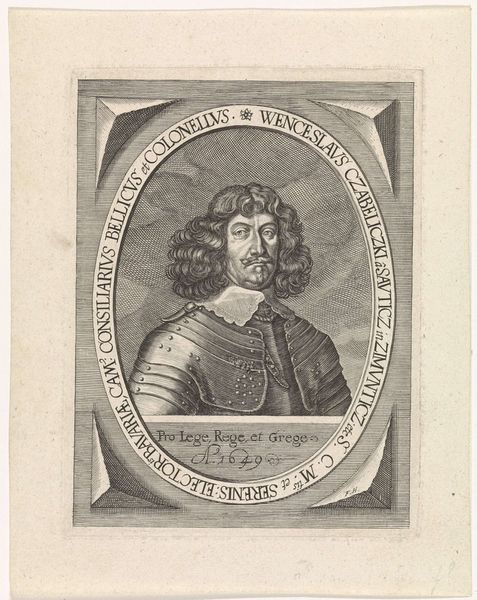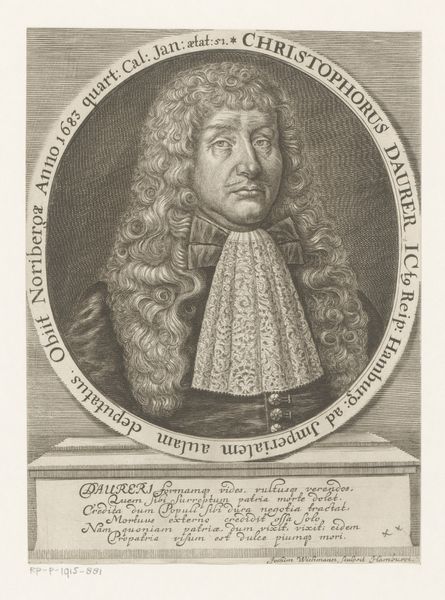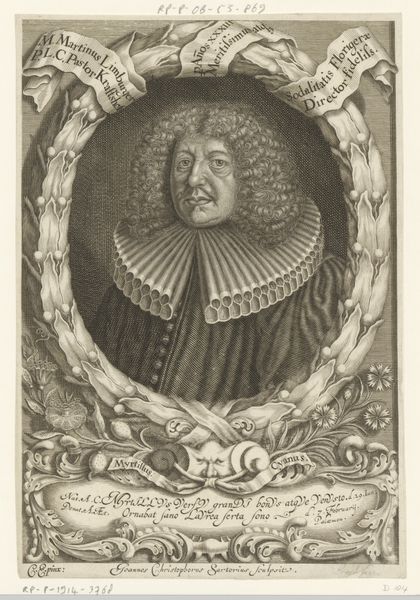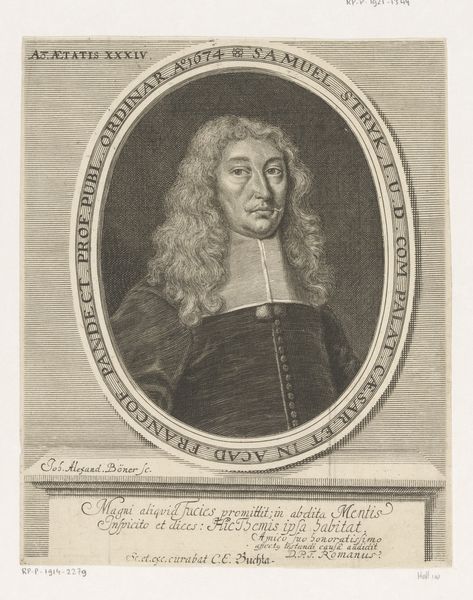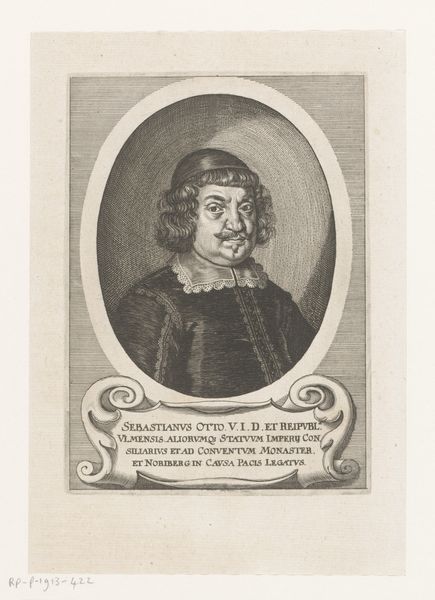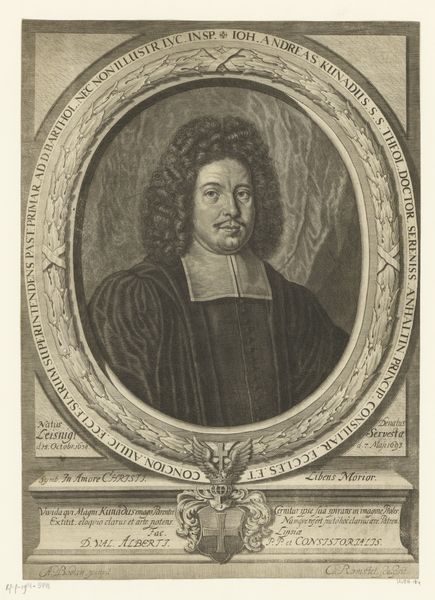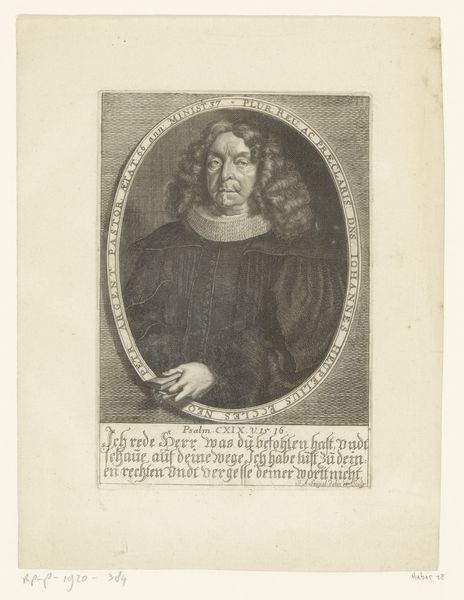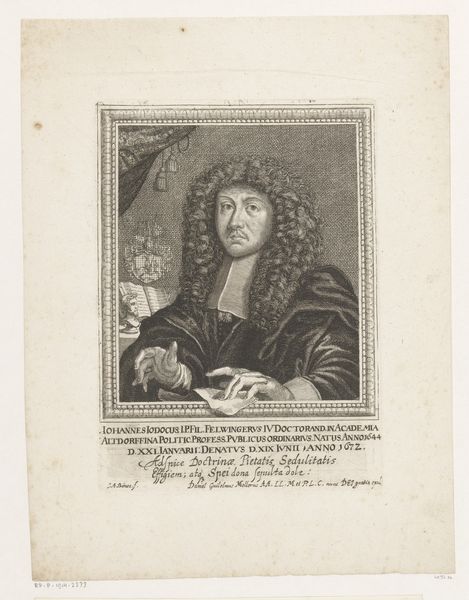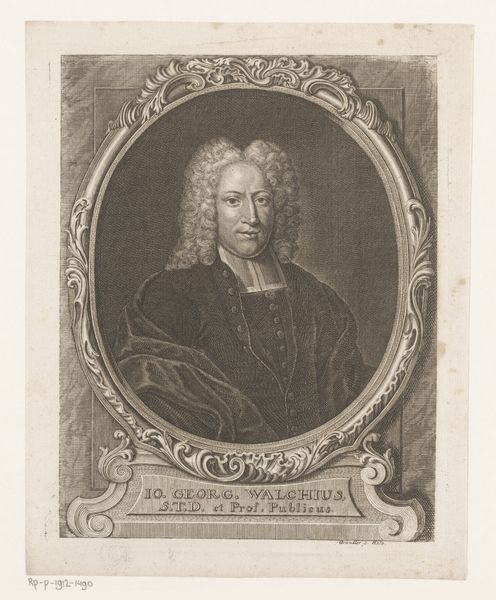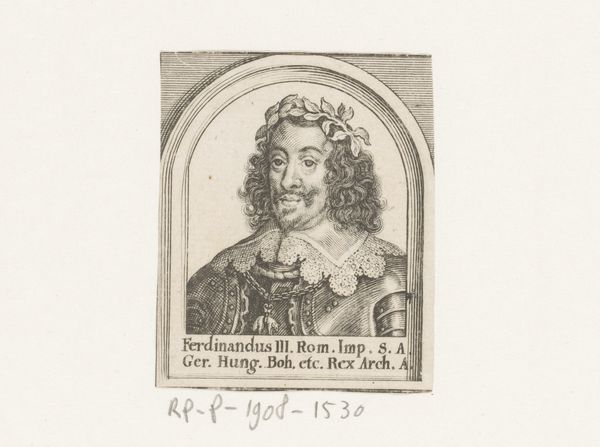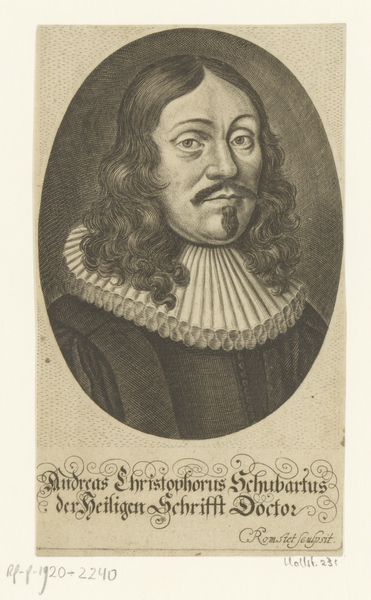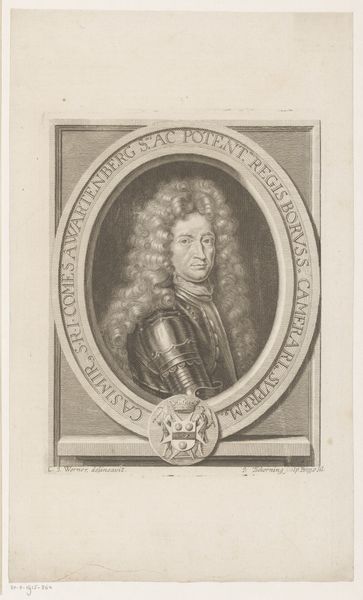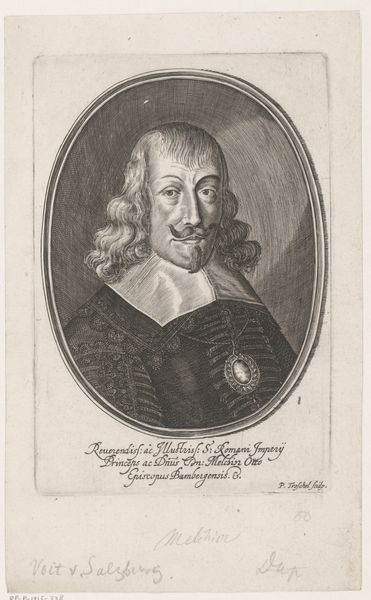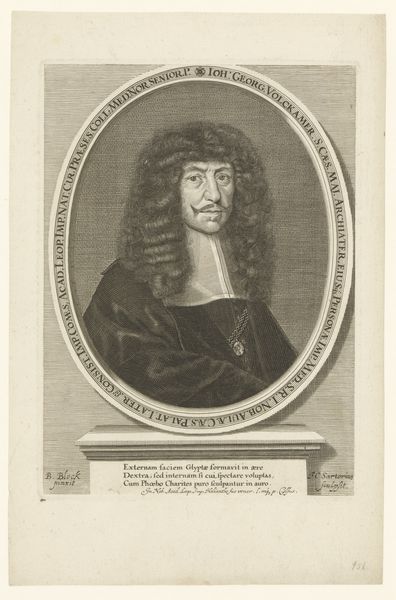
engraving
#
portrait
#
baroque
#
old engraving style
#
engraving
Dimensions: height 107 mm, width 90 mm
Copyright: Rijks Museum: Open Domain
Editor: This is a portrait of Johann Freinsheim, made in 1673 by Melchior Hafner. It’s an engraving, with a tight circular composition. There’s a lot of linear detail for an engraving. What stands out to you in this piece? Curator: I'm drawn to the material processes that defined printmaking in the 17th century. Consider the engraver’s labor: the deliberate, painstaking act of incising lines into a metal plate to produce this image. The varying depths and densities of these lines weren't just about rendering Freinsheim's likeness. They signify a physical transformation – metal yielding to human intention, pressure, and skill. How do you think that process of reproduction influenced the reception of portraiture? Editor: That's fascinating. I hadn't considered the labor aspect so deeply. Maybe the availability of multiples through printmaking democratized access to portraits, shifting the power dynamics around image creation and distribution. It feels less precious as an object if many versions can exist. Curator: Precisely. Consider also the availability of paper – a relatively new, and rapidly evolving, commodity at the time. Paper making and its role as a substrate is often overlooked, and yet its properties directly shaped what prints looked and felt like to their original audiences. It enabled a rapid proliferation of imagery throughout society. Do you notice the use of text in the artwork? Editor: Yes! I see the inscribed text surrounding Freinsheim, "JOHANNES FREINSHEMIUS CONSILIARIUS REGIUS SVECICUS ET ELECTORAL PALATINUS." Curator: Think about this in connection to the manual work to inscribe it. Those Latin words aren’t merely labels, they are statements of power that Freinsheim wanted to showcase in society to gain a good image. The deliberate creation of this print implies Freinsheim sought to influence public opinion or disseminate his personal image within the intellectual circles of the time, a calculated act that underscores print's role in constructing and reinforcing social hierarchies. Editor: This gives me so much to think about in terms of artistic labor, the use of materials to communicate status, and the social context around it! Thanks! Curator: My pleasure. Examining the work this way offers a richer understanding of this era's print culture.
Comments
No comments
Be the first to comment and join the conversation on the ultimate creative platform.
